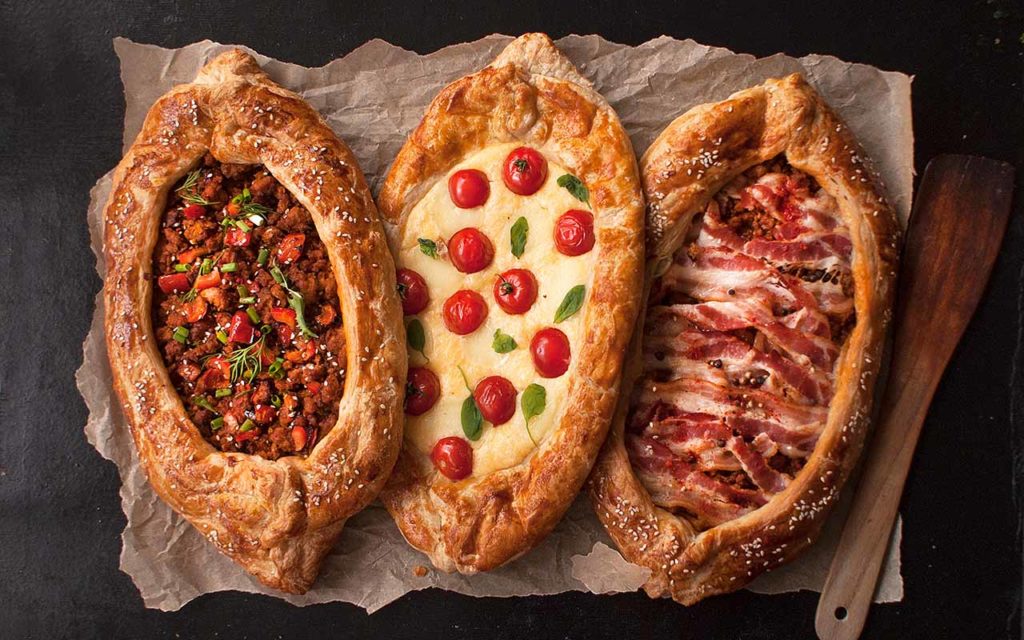General
Cevıırı: A Journey Through Turkish Delight

Presentation
Turkish Enjoyment, known as “lokum” in Turkish, is a sweet treat that has enamored taste buds for quite a long time. Among the bunch of brilliant varieties, one sticks out – Cevıırı. Go along with us on a culinary excursion through the captivating universe of Cevıırı, investigating its starting point, flavors, planning, and social importance.
Beginning of Cevıırı
Cevıırı has profound roots in Turkish culinary history, with its starting point followed back to the Ottoman Realm. “Cevırı” itself is a demonstration of the rich semantic embroidery of Turkey. The Turkish word “çevirme,” which means “turning” or “rotating,” comes from the way the sweet is traditionally cooked on a special grill.
Flavors that Astonish
Cevıırı brags a different exhibit seasons, every more tempting than the last. From exemplary rose and citrus to intriguing pomegranate and saffron, the choices are endless. The use of high-quality ingredients is the key to delivering a burst of genuine flavor with each bite.
Exemplary Rose: An immortal number one, this flavor summons the embodiment of conventional Turkish enjoyment.
Citrus Burst: Fiery and reviving, the citrus-injected Cevıırı adds a tart wind.
Pomegranate Heaven: Enjoy the pomegranate’s slightly tart and sweet flavors.
Saffron Style: Experience extravagance with the warm and fragrant bit of saffron.
Conventional Readiness Procedures
Cevıırı’s readiness is a work of art went down through ages. Ace confectioners fastidiously follow respected methods to accomplish the ideal surface and flavor. Here is a brief look into the customary readiness process.
Ingredients: An agreeable mix of sugar, water, starch, and flavorings.
Cooking: The combination is gradually warmed and mixed until it arrives at an exact temperature.
Setting: Once cooked, it is filled forms and passed on to set, accomplishing the notorious jam like consistency.
Cutting and Covering: The set blend is cut into scaled down 3D squares, cleaned with powdered sugar or parched coconut to forestall staying.
Social Meaning of Cevıırı
- Cevıırı isn’t simply a sweet treat; It is a cultural icon that is ingrained in Turkish customs. Cevr has come to symbolize happy occasions, whether it is served at weddings, celebrations, or as a gesture of hospitality. The country’s long history and deeply ingrained traditions are reflected in its symbolic presence in Turkish culture.
Medical advantages of Cevıırı
Past its scrumptious taste, Cevıırı offers amazing medical advantages when consumed with some restraint.
Wealthy in Cancer prevention agents: Many flavors, like pomegranate and saffron, contribute cancer prevention agents, advancing in general wellbeing.
Stomach related Help: The starch content guides processing, making it a superb post-dinner extravagance.
State of mind Enhancer: The sugary treat has been shown to improve mood, making it the ideal remedy for stressful situations.
Current Turns on Cevıırı
While regarding custom, current gourmet experts and aficionados have embraced advancement, acquainting energizing turns with Cevırı.
Chocolate-mixed Enjoyment: A marriage of exemplary Turkish joy and rich chocolate for a liberal encounter.
Nutty Varieties: Almonds, pistachios, and hazelnuts add a great smash to the delicate surface.
Combination Flavors: From lavender-mixed to chai-flavored, innovative flavors rethink the Cevıırı experience.
Where to Track down Cevıırı
Enjoying Cevırı is an encounter worth chasing. International markets and online platforms make it possible to enjoy this Turkish treasure all over the world, despite the fact that Turkey continues to be the center of authentic delicacies. Investigate neighborhood Turkish business sectors, specialty sweet shops, or trustworthy web-based retailers for a sample of Cevıırı conveyed to your doorstep.

Conclusion
With its diverse flavors, cultural significance, and extensive history, welcomes you on a delightful journey through Turkish customs. Cevr promises a culinary adventure that transcends borders, whether you go for the traditional rose-infused dessert or try something new. Join the positions of the individuals who have found the sorcery inside each chomp, and allow Cevırı to turn into your very own valued piece culinary collection.
FAQS
1. What is Cevıırı?
Cevırı is a kind of Turkish Pleasure, a sweet treat with profound roots in Turkish culinary history. The name “Cevırı” comes from the Turkish word “çevirme,” mirroring the conventional technique for planning including revolution on an exceptional barbecue.
2. What are the traditional flavors of Cevıırı?
Cevıırı offers a different scope of flavors, including exemplary rose, citrus burst, pomegranate heaven, and saffron style. Each flavor is painstakingly created utilizing great fixings to give a valid and wonderful taste insight.
3. How is Cevıırı traditionally prepared?
Customary Cevırı planning includes a careful cycle went down through ages. It incorporates mixing sugar, water, starch, and flavorings, slow warming and blending, setting in molds, cutting into shapes, and covering with powdered sugar or parched coconut to accomplish the notorious jam like consistency.
4. What is the cultural significance of Cevıırı in Turkey?
Cevırı holds extraordinary social importance in Turkey, frequently being served during happy events, weddings, and as an image of friendliness. It mirrors the country’s rich history and customs, making it a vital piece of upbeat festivals.
5. Are there health benefits to consuming Cevıırı?
Indeed, Cevırı offers amazing medical advantages when consumed with some restraint. It is wealthy in cancer prevention agents, with flavors like pomegranate adding to by and large wellbeing. Moreover, its starch content guides processing, and the sweet treat is known to hoist temperament, going about as a brilliant post-feast extravagance.
General
Managing Household Pests: Prevention Tips for a Pest-Free Home

Key Takeaways
- Household pests can cause significant damage and health issues if not managed properly.
- Prevention is more effective and economical than dealing with infestations.
- Simple lifestyle changes can reduce the likelihood of pest infestations.
- Knowing when to seek professional assistance is crucial for maintaining a pest-free home.
Recognizing Common Household Pests
Household pests can turn a cozy home into a nightmare if not addressed promptly. Common invaders such as ants, rodents, and cockroaches can wreak havoc by damaging structures, contaminating food, and spreading diseases. Taking pest control measures is crucial, but implementing preventive strategies that keep these unwelcome guests at bay is even more so. By adopting a proactive approach, homeowners can effectively reduce the risk of infestations and maintain a healthy, comfortable living environment.
The Impact of an Infestation
An infestation can lead to severe consequences if not addressed on time. Structural damage is common, as rodents can chew through woodwork and wiring, posing fire hazards. Health risks are also significant, with pests like cockroaches potentially spreading bacteria and allergens that exacerbate asthma and allergies. According to a recent report, pests in the home can lead to diseases and other health complications, highlighting the importance of addressing these issues swiftly. Professional pest control services can help mitigate these risks, ensuring a safe and healthy living environment.
Basic Prevention Techniques
Prevention begins with maintaining a clean and orderly home. Regularly cleaning areas where food is stored and consumed, closing gaps around windows and doors, and addressing plumbing leaks will reduce the likelihood of pest intrusion. Storing food in airtight containers and disposing of garbage frequently will cut off essential resources for pests. Additionally, inspecting for and repairing structural vulnerabilities can prevent entrances for these uninvited guests.
Advanced Prevention Strategies
To enhance your pest prevention efforts, consider how the exterior of your home can deter pests. Ensuring that branches and shrubs do not touch your house can prevent pests like ants and rodents from using them as bridges. Deploying non-toxic repellents and humane traps can further discourage pests without harming children, pets, and the environment. This sustainable approach to pest control aligns with an increasingly eco-conscious mindset, allowing you to protect your home responsibly.
Seasonal Pest Challenges
Pests exhibit different behaviors as the seasons change, which can influence the type and intensity of infestations. For example, ants may be more active during warmer months, searching for food and moisture. Colder months might see an influx of rodents seeking shelter from the elements. Understanding seasonal pest patterns allows homeowners to adopt timely measures, adapting their strategies according to the time of year. Reviewing these seasonal strategies can help in planning year-round pest control efforts.
Signs it’s Time to Call a Professional
While many pest issues can be managed with DIY methods, there are situations where professional intervention is necessary. Persistent or large-scale infestations often require the expertise and tools that professional pest control services offer. Signs indicating the need for professional help include gnawed wires, nesting materials, or repeated sightings despite your best efforts. Professionals provide targeted solutions, vastly reducing the time and effort required to manage severe pest problems effectively.
Long-Term Home Upkeep for Pest Control
Once you’ve achieved a pest-free home, ongoing vigilance is crucial to maintain that status. Regular home inspections can help identify new vulnerabilities that pests could exploit. Simple modifications, like adding door sweeps or fixing cracks, can serve as long-term deterrents. Establishing a habit of routine maintenance and prevention will not only safeguard your home but also foster a healthier living space for your family.
Conclusion: A Pest-Free Future
Adopting a proactive stance against pests brings numerous benefits beyond mere comfort. Implementing these prevention strategies can save time, money, and stress in the long run. As the adage goes, an ounce of prevention is worth a pound of cure. By staying informed, prepared, and vigilant, you can protect your home and family from the challenges posed by household pests, ensuring a safer, healthier future.
General
Amaziğ: The Rich Woven Artwork of Berber Culture

The Berber people, also known as the Imazighen, have an ancient and enigmatic culture that has withstood the test of time, preserving its unique traditions, language, and art. Among the many forms of artistic expression cherished by the Berbers, Amaziğ weaving stands out as a profound and intricate testament to their creativity and skill. From the deserts of Morocco to the mountains of Algeria, the colorful strands of Amaziğ not only adorn homes but also tell stories and carry the spirit of a people through generations. This rich woven artwork, which has captured the interest of art enthusiasts and cultural explorers worldwide, is far more than just a tapestry; it’s a living document of Berber heritage. In this extensive exploration, we uncover the threads of Amaziğ and the tapestry of Berber culture they unravel.
Historical Origins of Amaziğ
Weaving Through Time
The history of Amaziğ weaving can be traced back centuries, if not millennia. With archaeological evidence suggesting the existence of loom weights and spindles in ancient Berber sites, it is clear that textiles have played an integral role in the Berber way of life since time immemorial. The significance of weaving in Berber society goes beyond utility; it is a form of art that has been intertwined with rituals, ceremonies, and everyday life.
Pride in Pattern
For the Berbers, weaving was not just a craft but also a language, with each pattern, color, and even the direction of the weave conveying a specific meaning. From the early loincloths and shawls to the later complex tapestries and rugs, these weavings were not only utilitarian but also spiritual, serving as amulets, dowries, and bearers of family and tribal identity.
Techniques and Materials
The Craft of the Loom
The traditional methods of Amaziğ weaving are as varied as they are sophisticated. In the rugged landscapes of the Atlas Mountains and the Sahara, Berber women have mastered the art of hand-weaving using techniques passed down within their families. The loom itself, often simple in design, becomes a conduit for the weaver’s expression, allowing complex patterns to emerge with precision and patience.
Strands of Identity
The materials used in Amaziğ weaving are as diverse as the landscapes where Berber tribes have settled. Wool, from the flocks that roam the mountains, is a primary material, providing warmth and a tactile quality that is both rugged and comforting. Dyes are derived from natural sources, such as pomegranate skins, saffron, and indigo, adding a spectrum of colors that reflect the earth and sky of the Berber world.
Symbolism and Designs of Amaziğ
Threads of Meaning
Central to Amaziğ weaving are the patterns and motifs that adorn the textiles. These designs are not haphazard but deliberate, carrying with them a wealth of symbolism. Geometric shapes like diamonds, crosses, and triangles often represent natural elements, celestial bodies, and protective spirits. Each tribe and region has its own unique repertoire of symbols, creating a visual language that is at once personal and communal.
A Tapestry of Culture
The art of the Berber weaver is not one of mere decoration; it is a profound expression of identity and worldview. The intricate designs are filled with references to Berber cosmology, animism, and Islam, all existing harmoniously within the same piece. To gaze upon an Amaziğ weaving is to immerse oneself in the cultural tapestry of the Berbers, to glimpse their history, beliefs, and aspirations.
Contemporary Impact
Preserving Tradition
In the face of modernization and globalization, efforts to preserve the tradition of Amaziğ weaving have taken on renewed importance. Non-profit organizations, cooperatives, and individual artisans are working tirelessly to ensure that the art and techniques of Berber weaving are passed to the next generation. These initiatives not only safeguard a cultural heritage but also provide economic empowerment for Berber women who are often the primary weavers.
Weaving the Future
The influence of Amaziğ weaving has extended beyond the Berber community, finding admirers and collaborators across the globe. Contemporary fashion designers, interior decorators, and artists are looking to the tradition of Berber weaving for inspiration, creating a bridge between the ancient and the avant-garde. This cross-pollination of cultures is not dilutive but adaptive, with Amaziğ crafts taking new forms and finding new audiences while remaining rooted in their cultural context.

Appreciation and Collectibility
The Value of Art
The contemporary art world is waking up to the value of Amaziğ weaving, with collectors and connoisseurs recognizing the singular beauty and richness of these textiles. Fine examples of Amaziğ weavings are sought after for their historical significance, intricate designs, and vibrant colors. From humble village homes to prestigious auction houses, the artistry of Amaziğ weaving is finding its place among the most treasured artifacts of human creativity.
Collecting the Cosmos
For those who appreciate the art and culture behind Amaziğ weaving, collecting these pieces is akin to amassing a gallery of Berber history. Each weaving is unique, a window into a specific time, place, and cultural ethos. Collectors of Amaziğ are not merely accumulating objects; they are gathering a cosmos of stories, traditions, and the shared spirit of the Berber people.
Conclusion
In the art of Amaziğ, we find the essence of Berber culture—colorful, complex, and resilient. The weavings of the Imazighen are more than just artifacts; they are voices from the past, calling out to be heard in the present. They carry with them the warmth of the desert, the purity of the mountain air, and the vibrant tapestry of a people who have lived in harmony with their world for countless ages.
For those who seek to appreciate and support the art of Amaziğ weaving, there are many avenues to engage. Visit the weavers in their mountain villages, where the hum of the loom is a song of continuity and community. Purchase these works of art from reputable sources, ensuring that the legacy of the weavers is honored and their craft fairly compensated. Share the story of Amaziğ weaving, spreading awareness of this beautiful and profound expression of human ingenuity.
The Berber tradition of weaving is not a relic of the past; it is a living, breathing art form that evolves with each new thread. By celebrating and supporting Amaziğ, we become weavers of a different kind, connecting the world to the heritage of the Berber people and ensuring that their vibrant cultural tapestry continues to be woven into the fabric of human appreciation.
General
The Power of Quality: How Reputable Dealers Impact Your Saltwater Fishing Reel Investment

Introduction
In saltwater fishing, the quality of your reel can significantly impact your angling experience and success. However, navigating the vast array of options and ensuring you invest in a high-caliber product can take time and effort. This is where reputable dealers emerge as crucial partners, offering expertise, authenticity, and a commitment to quality that elevates your fishing endeavors.
The Importance of Quality in Saltwater Fishing Reels
Any seasoned angler knows that the quality of saltwater fishing reels can make or break the saltwater fishing experience. The demanding conditions of the open sea mean that reels must withstand corrosive saltwater, intense UV exposure, and the relentless pull of marine gamefish. High-quality reels are designed to excel under these pressures, offering durability, reliability, and fine-tuned performance. But what defines a high-quality reel? It’s not just the materials or price tag but also the expertise backing the product. That’s where reputable dealers come into play.
The Role of Reputable Dealers in Your Investment
A trustworthy dealer’s role extends far beyond the initial transaction of purchasing a fishing reel. They serve as curators of quality, only stocking products that match their standards for excellence. Moreover, they provide authenticity, ensuring the reels they sell are legitimate, high-caliber products rather than counterfeit or inferior models that can flood the market. When investing in a crucial piece of equipment, it is essential to have confidence in the product and the provider.
Enhancing Angling Success with Premium Reels
Investing in premium salt water reels from reputable dealers is more than a luxury—a strategic move toward angling success. These reels typically feature advanced technologies, precision engineering, and unparalleled craftsmanship. Such quality ensures a smoother cast, greater sensitivity to bites, and a more controlled experience when reeling in a tough catch. With a premium reel, anglers have a tool that meets the challenges of saltwater fishing head-on, enhancing their chances of a rewarding catch.
Protecting Your Investment: The Benefits of Buying from Established Dealers
Investing in high-end saltwater reels means you’re not just buying a product but engaging in a relationship with the dealer. Established dealers often provide additional services that preserve the longevity and performance of your gear. These services may include thorough after-sales support, maintenance advice, warranty services, and sometimes trade-in options. By choosing a reputable dealer, you gain access to these benefits, ensuring that your investment is well-protected and that your fishing gear remains in top condition for many seasons.
Why Expertise Matters in Selection and Maintenance
Expertise is invaluable when it comes to selecting and maintaining saltwater fishing reels. Reputable dealers have a deep understanding of the products they offer, enabling them to assist customers in choosing the reel that best suits their fishing style and target species. Furthermore, these experts can provide practical advice on maintaining your reels, from proper cleaning techniques to periodic servicing. This expertise ensures that anglers are equipped with a product and the knowledge to maintain its performance over time.
Understanding the Long-Term Value of Premium Gear
While involving an enormous upfront expenditure, premium fishing gear often exhibits more excellent long-term value. High-end reels are built to last and crafted from superior materials focusing on longevity. The initial cost is mitigated over the product’s lifespan, which requires fewer repairs and will outlast cheaper alternatives. Additionally, a premium reel’s improved performance and reliability can lead to more successful fishing expeditions, with less downtime and fewer lost catches due to equipment failure.
Conclusion
In conclusion, a relationship with a reputable dealer is fundamental to maximizing the benefits of your saltwater fishing reel investment. Quality gear, backed by industry expertise, extends beyond functionality and becomes an integral component of the fishing experience. The right dealer offers services that extend the life of your gear and enhance your overall success on the water. As the angling culture evolves, these dealers become partners in pursuing a sustainable and ethically-minded sport. Therefore, choosing a reputable dealer is not just about purchasing a product but about fostering a connection to a community that values performance, durability, and responsibility in equal measure.
-

 Technology8 months ago
Technology8 months agoBoosting Customer Engagement Through App Loyalty Programs
-

 Blog9 months ago
Blog9 months agoMaterialistic Princess Spoilers Complete Story 2024
-

 Technology9 months ago
Technology9 months agoGeekzilla Podcast: A Remarkable Journey into Geek Culture
-

 Blog9 months ago
Blog9 months agoThe Rich Culinary Heritage of Cassasse: A Delightful Journey into a Cultural Dish
-

 Technology8 months ago
Technology8 months agoWhat is Geöe? All You Need to Know in 2024
-

 Blog9 months ago
Blog9 months agoUnveiling the Delightful World of Pollaste: A Culinary Journey
-

 Blog7 months ago
Blog7 months agoUnveiling the History of Buší: A Traditional Delicious Dish
-

 Business9 months ago
Business9 months agoIndexnasdaq: .ixic: Latest Quotes, Charts, and Insights 2024





















